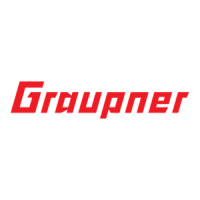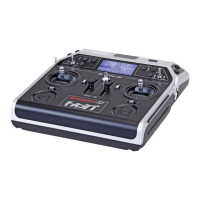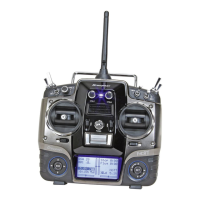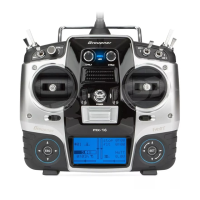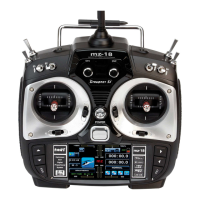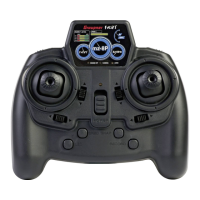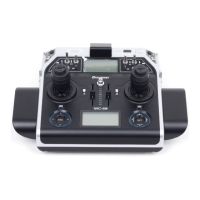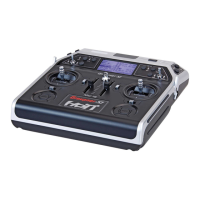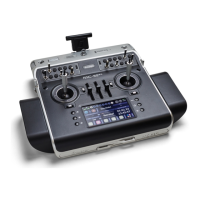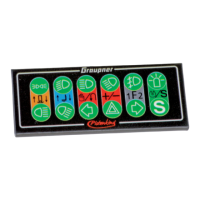49
Receiver initialization
General charging notices
The charging instructions for the charger as well •
as for the battery from its manufacturer to be
observed.
Pay attention to the maximum permissible •
charging current specifi ed by the battery's
manufacturer. In order to prevent damage to the
transmitter, charging current should never exceed
1 A. If necessary, limit the current at the charger.
If the transmitter battery is nevertheless to be •
charged at a current rate in excess of 1 A, then it is
imperative that this is done outside the transmitter.
Otherwise there is a risk of damage to the
transmitter's board due to overloading its printed
circuit paths and/or overheating of the battery.
If an automatic charger is to be used for charging, •
perform several test charging procedures to ensure
the fl awless functionality of its automatic shut-off.
This applies particularly if you want to charge the
standard installed NiMH battery with an automatic
charger unit intended for NiCd batteries Monitor the
charger's shut-off behavior if it has that option.
Do not execute a battery discharge or battery •
maintenance program through the charger jack.
The charger jack is not suitable for this purpose.
Alway connect the charger cable to the charger •
fi rst and then to the receiver or transmitter battery.
This avoids the possibility of shorting the bare
banana plug ends together.
If the battery heats up signifi cantly, check the •
battery's condition, replace the battery or reduce
the charging current.
Never leave a charging battery unattended.•
Follow the safety notices and handling •
instructions provided on page 7.
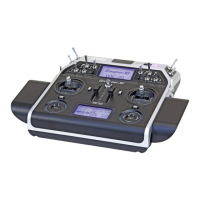
